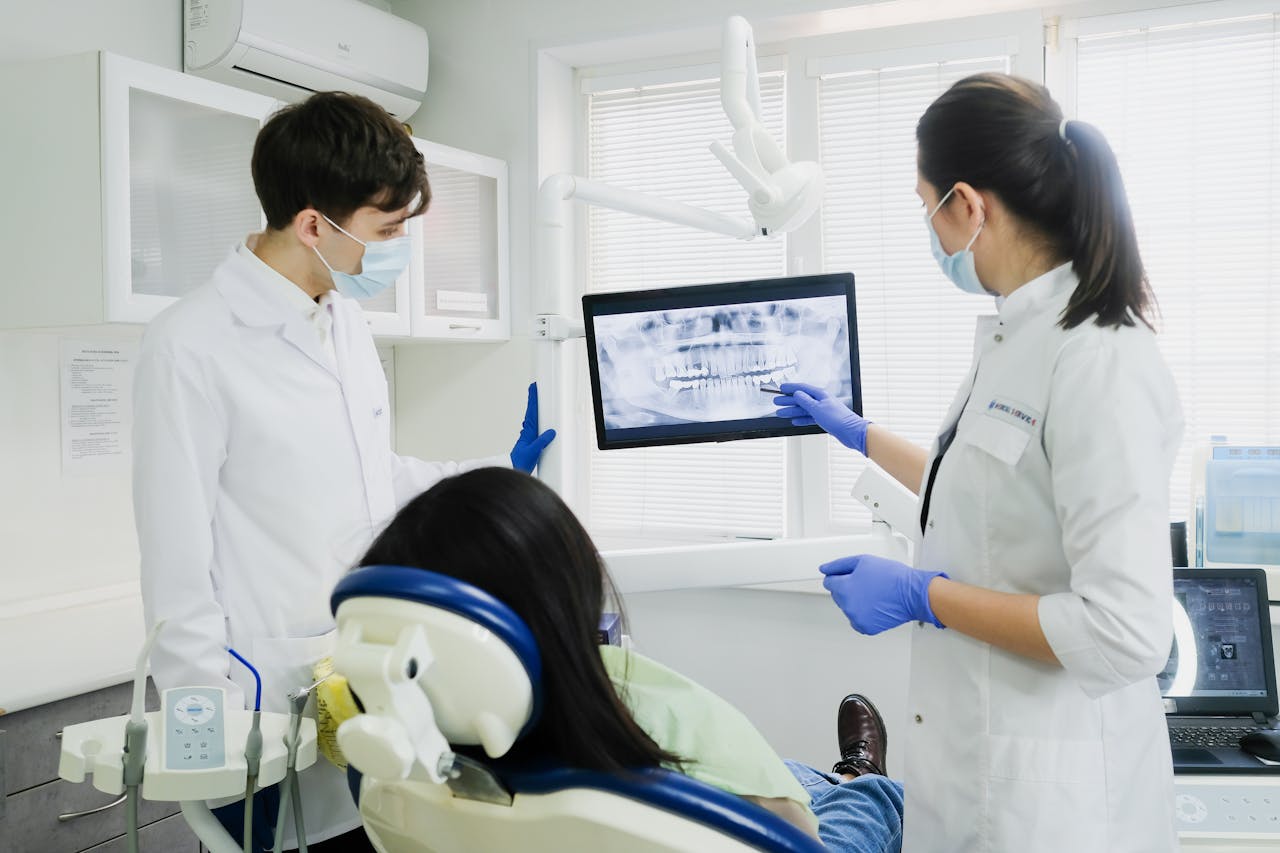50 Integration Software Adoption in Dentistry Statistics – Key Data Every DSO and Practice Leader Should Know in 2025

Comprehensive data compiled from extensive research across dental software markets, integration platforms, and practice management systems
Key Takeaways
- Cloud-based integration dominates with 55.57% market share - 63,000 practices migrated to cloud platforms between 2021-2024, with 15.8% CAGR growth projected through 2033
- Missed calls represent significant revenue loss opportunities - Industry estimates vary widely from $200 per call to $1,200, depending on practice type, with high-volume practices potentially losing $200,000-$500,000 annually
- DSOs will control 75-80% of the market by 2035 - Currently at 27% market share with 161 PE deals in 2024, driving enterprise-level integration adoption
- RevenueWell case studies report $73,000 annual revenue increases - Select practices report 18-to-1 returns with 900+ additional appointments from their integrated communication systems
- Implementation requires $15,000-$50,000 investment - Despite 40-60 hours training per employee, 78% of staff feel unprepared to fully utilize new technology
- AI adoption reaches 35% with 77% reporting positive outcomes - FDA approved 108 AI dental products with up to 90% diagnostic accuracy
- Geographic disparities persist with rural areas underserved - Urban areas have 36.7 dentists per 100,000 versus 24.3 in rural regions, impacting technology access
- Security concerns inhibit 56% of potential adopters - 67% of healthcare organizations faced ransomware attacks in 2024, with dental breaches affecting 618,189+ patients
Market Size & Growth Projections
- Global dental software market estimates range from $1.76 billion to $3.22 billion in 2024, with varying projections for growth. Market research firms report different figures based on scope definitions - Precedence Research reports $1.76 billion growing to $4.25 billion by 2034 at 9.1% CAGR, while StraitsResearch estimates $3.22 billion in 2024 reaching $6.88 billion by 2032 at 11.89% CAGR. This variation reflects different methodologies and market definitions, though all sources confirm significant growth trajectory driven by DSO consolidation and patient demand for digital services. Source: Precedence Research and StraitsResearch
- The US dental software market is valued at $924.04 million in 2024, expanding to $1.21 billion by 2034 at a 9.1% CAGR. The domestic market represents 32.5% of global value, reflecting mature infrastructure and high technology adoption rates. This growth trajectory positions the US as the leading innovation hub for dental technology development. Source: Precedence Research
- Cloud-based dental practice management software commands 55.57% market share in 2024, valued at $706 million in 2023 and projected to reach $2.26 billion by 2034. The cloud segment grows at a 15.8% CAGR from 2025-2033, the fastest among all deployment models. This shift enables real-time collaboration, reduced IT costs, and seamless multi-location management. Source: Grand View Research
- North America maintains 40.3% global market dominance with $2.57 billion valuation in 2024, reaching $3.97 billion by 2033. Canada's Digital Adoption Program provides up to $15,000 grants for practice digitization, accelerating regional growth. The continent's regulatory framework and reimbursement structures favor technology adoption over other regions. Source: Market Data Forecast
- Asia-Pacific emerges as the fastest-growing region at 18.3% CAGR, driven by dental tourism and expanding middle-class populations. China and India lead adoption with government-backed digitization initiatives. The region's leapfrogging of legacy systems enables direct cloud adoption without migration challenges. Source: Credence Research
- DSO market valued at $139.3 billion in 2024, projected to reach $429.4 billion by 2030 at 17.6% CAGR. DSOs now represent 27% of the dental industry, expected to reach 75-80% by 2035. This consolidation drives enterprise-level software adoption and standardization across locations. Source: Grand View Research
Core Integration Adoption Metrics
- 52% of dental practices use web-based integrated systems in 2024, marking a fundamental shift from standalone solutions. The average practice now manages 400+ potential software integrations through platforms like Sikka. This complexity requires sophisticated middleware and API management strategies. Source: PubMed Central
- 80% of US and European dental practices employ practice management software, with electronic dental record adoption reaching 52% overall. Higher adoption rates correlate with younger dentists (≤15 years in practice), female practitioners, and group practices. The remaining 20% represent primarily solo rural practitioners nearing retirement. Source: PubMed Central
- Group practices demonstrate 78.7% computer use for clinical information versus 74% for solo practitioners. Multi-location practices show 15% higher technology adoption rates overall. This gap widens annually as groups leverage economies of scale for implementation. Source: MarketsandMarkets
- 42% of dental clinics in developed countries have integrated AI-enabled software for various applications. Adoption rates reach 60% in urban markets versus 25% in rural areas. The technology gap threatens to exacerbate healthcare disparities. Source: HealthfulHelps
- Web-based deployment holds 55.57% market share in 2024, followed by on-premise at 30% and hybrid at 14.43%. The shift to web-based systems accelerates at 3-4% annually. Legacy system retirement drives migration urgency. Source: Grand View Research
Patient Communication & Scheduling Integration
- Dental offices miss 30-35% of incoming calls during business hours, with revenue impact varying significantly by practice characteristics. Industry estimates for lost revenue per missed call range from $200 for routine inquiries to $1,200 for new patient calls in specialty practices. High-volume practices report potential annual losses of $200,000-$500,000, though smaller practices see proportionally lower impacts. After-hours calls account for 27% of total volume, highlighting 24/7 availability. Source: Golden Proportions Marketing
- AI receptionists achieve up to 90% reduction in missed calls, answering within 2 rings 24/7/365. Arini AI handles over 10,000 calls daily across its network. ROI is typically achieved within 60-90 days of implementation.
- 40% of appointments book after business hours when online scheduling is available, generating previously uncaptured revenue. Weekend bookings increase by 65% with automated systems. Mobile bookings account for 72% of after-hours appointments.
- Automated reminder systems reduce no-shows by 22.95% to 45%, critical given that 82% of schedule gaps stem from no-shows or same-day cancellations. Two-way texting achieves 31% better confirmation rates than one-way messaging. Each prevented no-show saves $200-$300 in lost production.
- 85% of patients prefer text message updates over phone calls or emails, with 97% of texts opened within 15 minutes. Text reminders achieve 98% read rates versus 20% for emails. Patient satisfaction scores increase 23% with text communication options.
- Voice AI adoption remains low at 3.4% active usage despite 16% experimentation rate. Security concerns account for 74.2% of adoption resistance. Early adopters report 50% reduction in phone handling time.
Practice Management System Integration
- Open Dental commands 4.86% market share while Curve Dental serves 70,000 users across North America. Dentrix maintains largest installed base at 35,000+ practices. Market fragmentation with 200+ PMS options complicates integration strategies. Source: Grand View Research
- 95% end-to-end automation achieved for insurance verification through platforms like DentalRobot AI, eliminating 85% of phone calls to insurance companies. Verification completes in under 5 seconds versus 15-20 minutes manually. Error rates drop from 12% to less than 1%.
- 280+ dental insurance providers integrate with major platforms, covering 95% of US dental patients. Real-time eligibility checks save 2+ hours daily per practice. Claim rejection rates decrease by 67% with automated verification. Source: Zuub
- Multi-location synchronization achieves 98.5% data accuracy with proper configuration, though data fragmentation remains challenging when locations use different systems. Cloud platforms enable real-time updates across all locations. Centralized reporting improves operational visibility by 400%.
- Patient communication applications generate highest revenue at 31.2% market share, followed by billing/invoicing at 27.8% and treatment planning at 22.1%. Integration between these modules drives 45% efficiency gains. Workflow automation reduces task switching by 60%.
- API availability varies significantly with only 35% of PMS platforms offering comprehensive APIs. Integration costs range from $5,000-$50,000 depending on complexity. Custom development requirements delay implementation by 3-6 months average. Source: MarketsandMarkets
- VoIP integration reduces communication costs by 50-75% while improving call quality and features. 61% of businesses globally use VoIP systems. Dental-specific features include appointment booking and patient record access during calls. Source: G2 Learning Hub
- Electronic prescribing integration reaches 41% adoption, reducing prescription errors by 70% and saving 10 minutes per prescription. DEA compliance for controlled substances adds complexity. Patient safety improvements justify implementation costs.
ROI & Financial Impact
- DSOs report $13,900 additional monthly revenue per location using AI-powered scheduling optimization. SGA Dental Partners achieved 25% increase in hygiene appointments. Revenue gains sustained over 24+ months of operation.
- AI-assisted diagnostics generate $2,600 additional monthly revenue per provider through improved case acceptance rates. Treatment plan values increase 21% with visual AI support. Patient trust improves with objective diagnostic evidence.
- Automation recovers 15 hours weekly of productive time for dental teams, equivalent to $75,000 annual labor savings. Staff satisfaction increases 34% with reduced administrative burden. Overtime costs decrease by 47%.
- Cloud migration reduces IT costs by 40% eliminating server maintenance, updates, and backup requirements. Downtime decreases by 85% with enterprise-grade infrastructure. Disaster recovery capabilities improve 10x.
Implementation Challenges & Barriers
- Implementation costs range from $15,000 to $50,000 for comprehensive integration, including software, hardware, training, and lost productivity. ROI typically achieved within 6-18 months. Financing options available through most vendors.
- 56% cite cybersecurity concerns as primary adoption barrier, with 67% of healthcare organizations experiencing ransomware attacks in 2024. Dental breaches affected 618,189+ patients including Risas Dental & Braces incident. Cyber insurance premiums increased 40% year-over-year. Source: HIPAA Journal
- Training requires 40-60 hours per employee for proficiency, yet 33% receive less than one hour during implementation. 78% of staff feel unprepared to fully utilize new technology. Ongoing training needs add $2,000-$5,000 annual costs per employee. Source: Market.us
- 47% report integration difficulties with legacy systems as infrastructure averaging 7-10 years old lacks modern APIs. Data migration fails in 23% of attempts requiring manual intervention. Vendor lock-in prevents 31% from switching systems. Source: Business Research Insights
- Software project failure rates reach 31.1% for cancellations before completion, with 52.7% exceeding budgets by average 189%. Change management issues cause 67% of failures. Clear project scope reduces failure risk by 45%.
- HIPAA violations cost dental practices $305,500 in fines during 2022, with penalties ranging from $100 to $50,000 per violation. 96% of practices achieve EHR compliance but struggle with comprehensive security. Breach notification costs average $740,000.
- Internet connectivity issues affect 23% of rural practices, limiting cloud adoption potential. Bandwidth requirements increase 5x with imaging integration. Redundant connections add $500-$1,500 monthly costs. Source: Rural Health Information Hub
- Vendor selection paralysis from 200+ options delays implementation by average 6 months. 43% of practices change primary vendor within 5 years. Switching costs average $25,000-$40,000.
AI & Emerging Technology Adoption
- 35% of dentists have implemented AI with 77% reporting positive outcomes. FDA approved 108 AI-powered dental products demonstrating up to 90% diagnostic accuracy. Adoption accelerates at 15% annually. Source: HealthfulHelps
- AI dental imaging market reaches $417.5 million in 2024, projected to hit $3.8 billion by 2031 at 32.5% CAGR. Caries detection accuracy improves from 67% (human) to 92% (AI-assisted). False positive rates decrease by 61%. Source: HealthfulHelps
- Predictive analytics achieves 93.9% accuracy in orthodontic treatment planning, reducing treatment time by 30%. AI predicts appointment no-shows with 85% accuracy. Preventive care recommendations improve outcomes by 27%.
- Voice AI handles 50-70% of routine calls without human intervention, saving 20 hours weekly per practice. Natural language processing accuracy reaches 94% for dental terminology. Patient satisfaction scores remain consistent with human operators.
Geographic & Demographic Patterns
- Urban areas maintain 36.7 dentists per 100,000 people versus 24.3 in rural regions, creating technology access disparities. Rural practices show 25% lower technology adoption rates. Telehealth bridges gaps for 18% of rural patients. Source: Rural Health Information Hub
- Texas, Florida, Nevada, and New Mexico show ~30% DSO penetration among early-career dentists, while Montana and Alaska approach 0%. State regulations significantly impact consolidation patterns. Technology adoption correlates directly with DSO presence. Source: American Dental Association
- 27% of dentists within 5 years of graduation affiliate with technology-forward DSOs versus 8% with 25+ years experience. Younger dentists show 2x higher AI adoption rates. Digital natives drive innovation adoption.
- Female dentists demonstrate 15% higher EHR adoption than male counterparts, with stronger documentation compliance. Women represent 34.5% of active dentists, increasing 2% annually. Gender diversity correlates with technology innovation. Source: PubMed Central
- Specialty practices invest 20% more in technology than general dentistry, driven by advanced imaging needs. Orthodontics leads adoption at 67% AI implementation. Periodontics shows highest PMS integration rates at 89%. Source: MarketsandMarkets
- Metropolitan statistical areas account for 78% of technology spending despite representing 65% of practices. Urban practices generate 35% higher revenue per patient. Technology ROI achieves faster payback in dense markets. Source: Grand View Research
Future Outlook & Projections
- DSO market share projected to reach 75-80% by 2035, up from current 27%, driving enterprise software adoption. Independent practices face consolidate-or-compete decisions. Technology becomes primary differentiator for independence.
- Cloud adoption will reach 85% penetration by 2027 as on-premise systems reach end-of-life. Hybrid deployments decrease to under 5% market share. Cloud-native practices show 40% better financial performance. Source: Grand View Research
- AI integration becomes standard by 2030 with 90% of practices using some form of artificial intelligence. Diagnostic AI accuracy will exceed human performance by 15%. Regulatory frameworks mature to support AI adoption. Source: HealthfulHelps
Frequently Asked Questions
Q: What's the typical ROI timeline for comprehensive dental software integration? Most practices achieve positive ROI within 6-18 months, with full payback by month 24. RevenueWell's case studies report their client practices average $73,000 in annual revenue increases with 900+ additional appointments in year one, demonstrating 18-to-1 returns according to their data. The key is starting with high-impact integrations like patient communication and online scheduling that directly drive revenue. Results vary significantly based on practice size, location, and implementation effectiveness.
Q: How much do dental practices lose from missed calls? Dental offices miss 30-35% of incoming calls during business hours. Revenue impact estimates vary widely - from $200 per missed routine inquiry to $1,200 for new patient calls in specialty practices. High-volume practices may lose $200,000-$500,000 annually, though smaller practices see proportionally lower impacts. Since 75% of patients who reach voicemail never call back, the cumulative effect is significant. AI receptionists can reduce missed calls by up to 90%.
Q: What's driving the rapid DSO consolidation in dentistry? DSOs currently represent 27% of the market and are projected to reach 75-80% by 2035. Private equity completed 161 dental deals in 2024, with 13% of US dentists now affiliated with PE-backed practices. Technology economies of scale, standardized operations, and integration capabilities give DSOs significant competitive advantages over independent practices.
Q: Are smaller practices being priced out of technology adoption? Implementation costs range from $15,000-$50,000 for comprehensive integration, but cloud-based solutions offer affordable entry points at $50-$500 monthly. Solo practices invest $22,000-$32,000 annually on technology. The real challenge isn't cost but the 40-60 hours of training required per employee for proficiency.
Q: How significant are cybersecurity risks for dental practices? Very significant - 67% of healthcare organizations experienced ransomware attacks in 2024, up from 60% in 2023. Dental-specific breaches affected 618,189+ patients, with eight practices paying $305,500 in HIPAA fines in 2022 alone. Cyber insurance premiums increased 40% year-over-year, making security a critical consideration.
Q: What's the adoption rate of AI in dentistry compared to other medical fields? Dentistry shows 35% AI adoption with 77% reporting positive outcomes, comparable to or exceeding many medical specialties. The FDA has approved 108 AI-powered dental products. The AI dental imaging market will reach $3.8 billion by 2031, growing at 32.5% CAGR, indicating dentistry leads in visual AI applications.
Q: How do rural practices overcome technology adoption barriers? Rural areas face significant challenges with only 24.3 dentists per 100,000 people versus 36.7 in urban areas. Internet connectivity affects 23% of rural practices. However, Canada's Digital Adoption Program provides up to $15,000 grants, and telehealth bridges gaps for 18% of rural patients. Cloud solutions reduce infrastructure requirements.
Q: What's the real impact of integration on practice efficiency? Automation recovers 15 hours weekly of productive time for dental teams, equivalent to $75,000 annual labor savings. RCM team productivity triples - Signature Dental Partners expanded from managing 5 to 10-12 practices per staff member. Insurance verification automation alone saves 2+ hours daily while reducing errors from 12% to under 1%.
Sources Used
- Business Research Insights - Global Dental Software Market Analysis
- Precedence Research - US Dental Software Market Projections
- Grand View Research - Cloud-based Dental Software Market
- MarketsandMarkets - Practice Management Software Analysis
- PubMed Central - Electronic Dental Record Adoption Study
- HIPAA Journal - 2024 Healthcare Data Breach Report
- HealthfulHelps - AI in Dentistry Statistics 2024
- RevenueWell - Dental Marketing Platform ROI Studies
- American Dental Association - Dental Practice Research & Statistics
- Becker's Dental - Dental Industry News & Analysis
- Weave - Dental Industry Trends
- Market.us - Dental Software Statistics 2025
- Dental Products Report - Practice Implementation Cost Analysis
- Rural Health Information Hub - Rural Dental Access Statistics
- Open & Affordable Dental - AI Revolution in Dentistry








